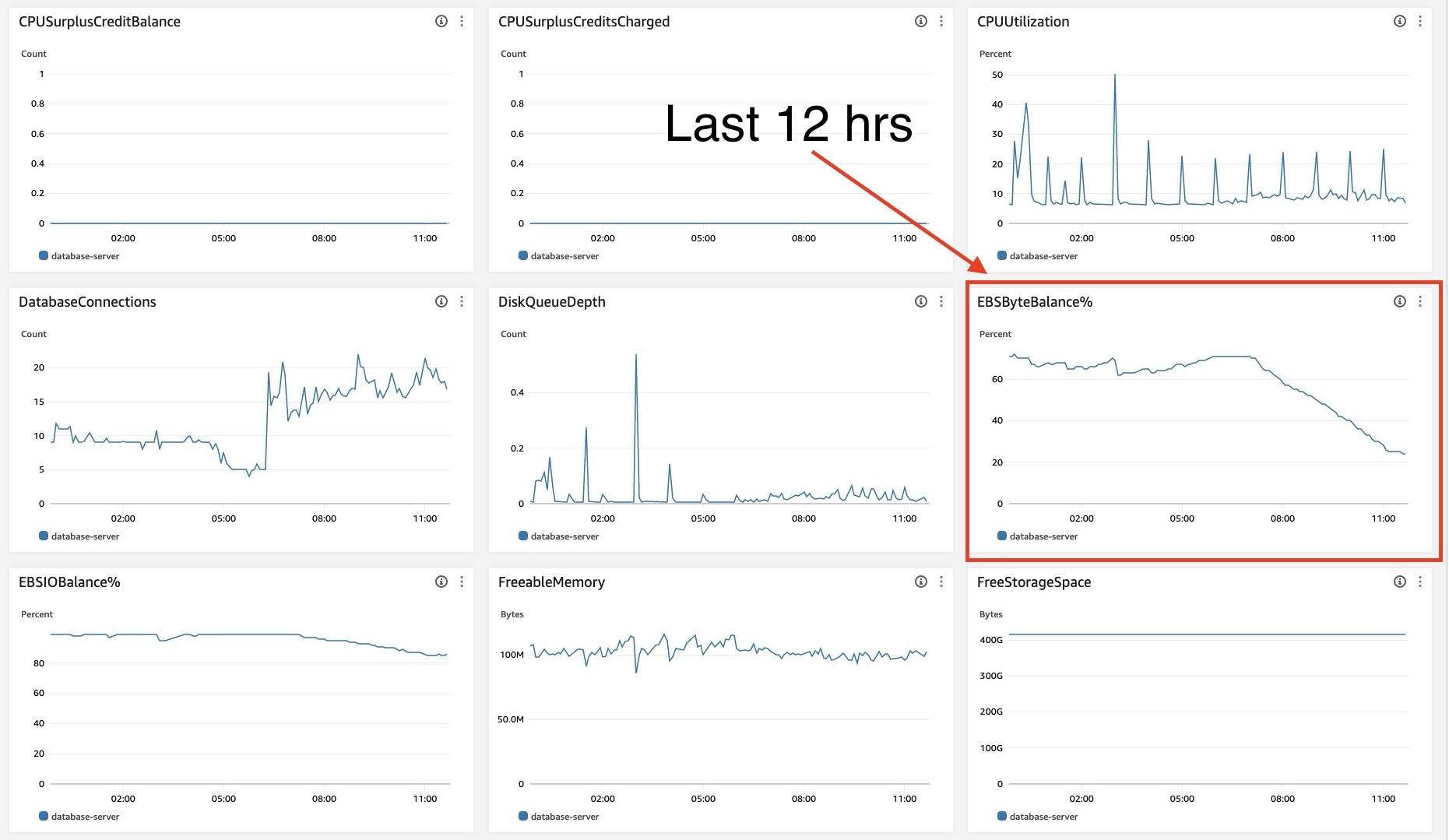1 Answer
- Newest
- Most votes
- Most comments
0
Hello.
The bottleneck seems to be in the RDS disk, so it may be a good idea to change the EBS specs instead of changing the instance type.
https://repost.aws/knowledge-center/rds-latency-ebs-iops-bottleneck
Using the GP3 volume type among general-purpose SSDs may help alleviate bottlenecks.
Unlike GP2, with GP3, IOPs and throughput can be controlled by the user.
https://docs.aws.amazon.com/AmazonRDS/latest/UserGuide/CHAP_Storage.html#Concepts.Storage.GeneralSSD
Changing the RDS instance type or storage will result in downtime.
To alleviate this, you need a multi-AZ configuration.
https://repost.aws/knowledge-center/rds-mysql-downtime-impact
Relevant content
- asked a year ago
- asked 2 months ago
- asked 5 months ago
 AWS OFFICIALUpdated a year ago
AWS OFFICIALUpdated a year ago AWS OFFICIALUpdated 2 years ago
AWS OFFICIALUpdated 2 years ago AWS OFFICIALUpdated 4 years ago
AWS OFFICIALUpdated 4 years ago


Hi, thanks for your answer.
I'm already using a gp3 storage. This are my current instance specs:
Instance class
db.t4g.micro
vCPU 2
RAM 1 GB
Multi-AZ Yes
Storage type
General Purpose SSD (gp3)
Storage 400 GiB
Provisioned IOPS 12000 IOPS
Storage throughput 500 MiBps
Storage autoscaling Enabled
Maximum storage threshold 450 GiB
If, for example, I upgrade to a db.m7g.large instance class will it still have this EBSByteBalance?
I think changing the instance type may lead to an improvement, as stated in the documentation I shared. https://repost.aws/knowledge-center/rds-latency-ebs-iops-bottleneck
db.m7g.large has higher throughput and IOPS than db.t4g.micro, so I think it may lead to improvement. https://docs.aws.amazon.com/AWSEC2/latest/UserGuide/ebs-optimized.html#current